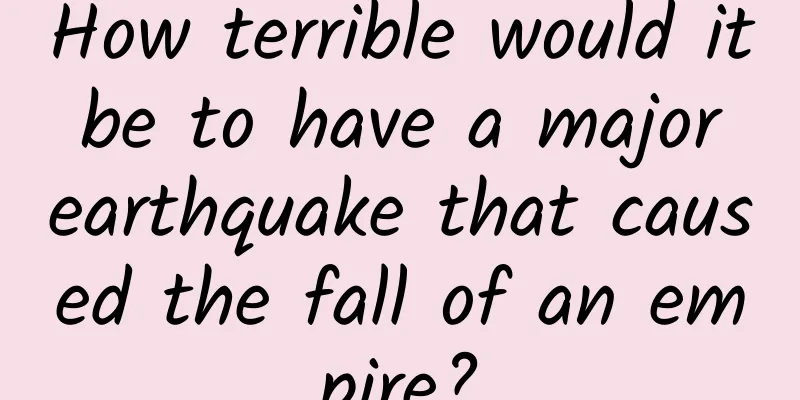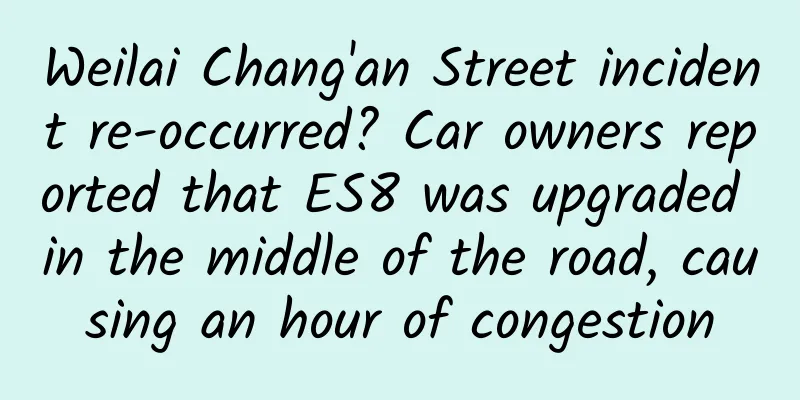How terrible would it be to have a major earthquake that caused the fall of an empire?

|
When you find that the sea water at the beach has suddenly receded, what do you think? Is it low tide, a natural phenomenon? Or is it a good time to go to the beach? Unfortunately, this abnormal phenomenon is not only not a good thing, but also a sign of impending disaster! 1Tsunami event that destroyed a capital city At 9:40 am on November 1, 1755, people in Lisbon, the capital of Portugal, were still immersed in the festive atmosphere of All Saints' Day. Suddenly, an earthquake that lasted for several minutes instantly turned people's emotions into panic and fear. With the strong earthquake, weak buildings collapsed one after another, and a huge crack several meters wide appeared on the ground in the center of Lisbon . Frightened people fled to open areas, such as docks and squares, to avoid the earthquake. The people who fled to the dock were surprised to find that the water on the shore had receded far to the sea, and even the sunken ships and the cargo inside had resurfaced. But what people didn't know was that a greater danger was approaching the city. About 30-40 minutes later, the receding water "rushed" back again - it was a tsunami! Huge waves several meters high directly submerged the docks, streets and houses of Lisbon, destroying everything in their path. To make matters worse, places that were not directly hit by the tsunami also caught fire due to the earthquake. In the densely packed buildings of Lisbon, the fire burned for five days before it was completely extinguished... Graphic depicting the tsunami and fires following the Lisbon earthquake Source: Wikipedia The previous description is about the tragedy of the Lisbon earthquake and the subsequent tsunami and fire in 1755. In this disaster, 85% of the buildings in Lisbon were destroyed, and the death toll reached about 60,000 to 100,000, which was more than one-third of the city's population at the time (about 270,000). This huge disaster not only almost completely destroyed the city of Lisbon, but also severely reduced the national strength of Portugal at that time, leading to the decline of the Portuguese colonial empire. Not only in Lisbon, but also in places such as Portugal and southern Spain and the northwest coast of Morocco, the earthquake and tsunami caused amazing damage. Even after more than 6,000 kilometers of transmission, when the tsunami reached the Lesser Antilles in the Caribbean, it still caused waves as high as 1-2 meters. 2Earthquakes and tsunamis in the Mediterranean The Lisbon tsunami caused varying degrees of water level fluctuations in the Atlantic coastal areas, but there is no clear record of disasters in the adjacent Mediterranean Sea. Does this mean that the countries surrounding the Mediterranean Sea are free from tsunami risks? Let's take a look at the earthquakes and tsunamis in the history of the Mediterranean region, which is connected to the Atlantic Ocean through the Strait. The impact of the Lisbon tsunami on the Atlantic Ocean and parts of the Mediterranean Sea Source: Beijing Science Center From historical records, we can see that earthquakes occur very frequently in the Mediterranean and surrounding areas. This is because the Mediterranean is located at the junction of the Eurasian Plate and the African Plate. There will be compression, collision and displacement between the plates, which will lead to frequent earthquakes, especially in the eastern Mediterranean region, which is one of the strongest seismic belts in the world. In the "Small Ball, Big World" special exhibition area of the Beijing Science Center, we can see all the earthquakes that occurred in the Mediterranean and surrounding areas from 1901 to 2000, including some that caused catastrophic consequences. The "Small Ball, Big World" exhibition area at the Beijing Science Center displays earthquakes that occurred between 1901 and 2000 Source: Beijing Science Center On December 28, 1908, a magnitude 7.5 earthquake occurred on the seabed of the Strait of Messina between Sicily and Calabria in Italy, triggering a huge tsunami as high as 12 meters in a local area, severely damaging Messina, the second largest city in Sicily, Italy, and killing more than 40,000 people. Studies have shown that the earthquake may have also triggered submarine landslides, which played a role in fueling the disaster; on August 17, 1999, an earthquake of about magnitude 7.6 occurred in Izmit, northern Turkey (also known as the Istanbul earthquake), killing more than 17,000 people, leaving more than 500,000 people homeless, and causing economic losses of more than 20 billion US dollars; on February 6 this year (2023), two 7.8-magnitude land earthquakes occurred consecutively in the border area between Turkey and Syria within one day, killing a total of nearly 60,000 people and causing economic losses of more than 100 billion US dollars... The occurrence of tsunamis is often related to submarine earthquakes, so are there any signs before the earthquake comes? 3Earthquake and tsunami warning Earthquake prediction and forecasting have always been a topic of continuous concern and research for earthquake and geologists. Although the scientific community cannot accurately predict the exact time and location of an earthquake, there are indeed some abnormal reactions of animals and special natural phenomena before an earthquake occurs, such as dogs may become irritable and bark wildly; mice may run around in broad daylight; fish may repeatedly jump out of the water; chickens may crow in the middle of the night, etc. In addition, there are some more obvious natural phenomena, such as geolights (also known as "earthquake lights"), which refer to the colored lights that appear above the area affected by the earthquake when it occurs. The duration ranges from a few seconds to tens of seconds and can usually be observed with the naked eye. On February 4, 1975, before the Haicheng earthquake in Liaoning, China, local people had observed the geolight phenomenon, which also became an important factor in the successful prediction of this earthquake. The relevant government departments believed the earthquake prediction results and took timely response and evacuation measures, which greatly reduced casualties and economic losses. But in fact, this successful earthquake prediction is still controversial in the scientific community. Scientists have always tried to predict earthquakes in various ways, including abnormal animal behavior and geoluminescence mentioned above , geomagnetic anomalies, weather phenomena (earthquake clouds), groundwater levels, and foreshocks of major earthquakes. However, due to the relatively small number of major earthquakes, it is difficult to analyze the exact correlation between related abnormal phenomena and records. At the same time, there is a lack of scientific theories that can fully explain the inevitable occurrence of earthquakes and various factors. This makes it impossible for scientists to accurately make a scientific explanation for the relationship between abnormal phenomena and earthquakes. It is also difficult for us to determine whether "signs of earthquakes" can really effectively predict earthquakes. Television broadcasts tips from earthquake early warning systems Source: CCTV News Photo Although earthquake prediction is not possible at this stage, earthquake early warning is possible, namely the so-called earthquake early warning system (EEWs). It uses the characteristics of the fast propagation speed of earthquake P waves (5.5 to 7 kilometers per second) to issue early warnings a few seconds to tens of seconds before the arrival of the slow-propagating but more destructive S waves (3.2 to 4 kilometers per second), which can buy precious time for people to escape. At present, the reaction time left by tsunami warning should theoretically be longer than that of earthquake. When an undersea earthquake occurs, the tsunami warning system will first make a preliminary assessment of whether it will trigger a tsunami based on the earthquake warning information, and then quickly issue the first wave of tsunami warning information; then it will monitor the changes in sea level (tsunami buoys, shore-based tide gauges, satellite remote sensing and other equipment) to determine whether a tsunami has really occurred. Once confirmed, the tsunami warning conclusion should be updated based on the monitoring information and the tsunami should be continuously tracked and monitored; finally, when the tsunami process is over, the tsunami warning should be lifted. If one day scientists can predict earthquakes, it will obviously be of great benefit to tsunami warnings. Audit expert: Wang Zongchen National Marine Environmental Forecast Center (Tsunami Warning Center, Ministry of Natural Resources) Assistant Researcher |
>>: International Day Against Drug Abuse and Illicit Trafficking丨How do drugs “kidnap” our minds?
Recommend
Zhumadian Mini Program Production Company, how much does it cost to produce a voting mini program?
More and more businesses are paying attention to ...
Who are the top advertisers in January? Industry Overview
According to the mobile advertising intelligence ...
Traditional SIM cards: It’s time to say goodbye
Key Points The existence of SIM cards has partial...
Google may disable fast charging technologies such as Qualcomm and MediaTek in future Android versions
According to a report by Android central, a well-...
Android 12 new features: making URL sharing easier
Compared with the previous two Beta versions, the...
Lao Jiang's Handicap Language "Nine One-trick Collection of Handicap Buying Skills"
Lao Jiang Handicap Language "Nine One-trick ...
Don't squeeze hard little lumps on your skin! They are prone to recurrence and leave scars
Many people like to scratch their skin when they ...
How do educational and training institutions attract new customers online?
On May 27, I was invited by a teacher from an edu...
Former Baidu employee reveals the secrets of knowledge search marketing: Get over 10,000 accurate exposures per week at 0 cost!
Search engine promotion is keyword-based marketin...
“Stay up late and drink the most nourishing water”, does ginseng water really have miraculous effects?
Before I officially start, I would like to ask yo...
Share this! Don’t go! Don’t go!
"High-salary overseas job openings" and...
How to use data to capture your target users?
A question that operations personnel are usually ...
2020 epidemic enterprise loan policy, how to apply for epidemic enterprise loan?
The China Banking and Insurance Regulatory Commis...
The correct attitude of home appliance manufacturers in the downward channel
Turning defense into offense and fighting a busin...
How did you get your first 1,000 users? Start with the stupid things!
The story begins with hotmail. In 1996, two engin...









